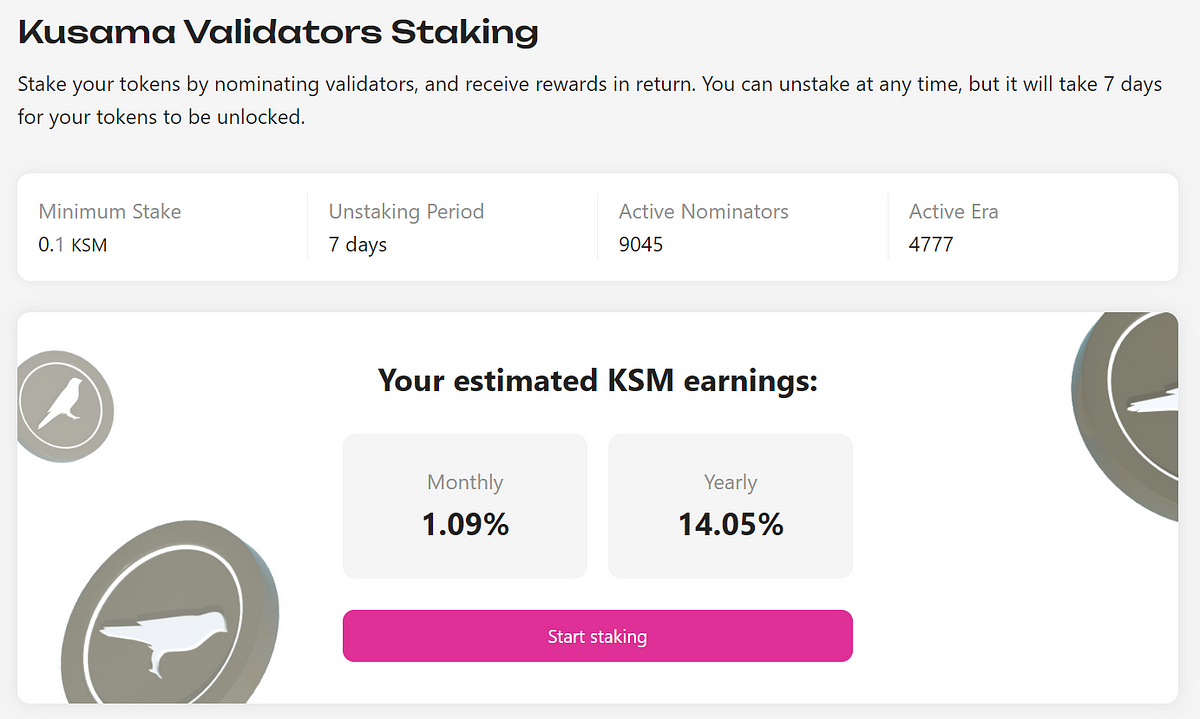DOT & KSM Staking On Sub.ID
Holders of DOT and KSM tokens can how stake them via Sub.ID!
As part of Batch 1 of our Kusama treasury proposal for continued development of Sub.ID, we have added support for validator staking on the Polkadot and Kusama relay chains. This allows token holders to bond their DOT or KSM in order to nominate validators, who in turn create blocks and earn rewards, which are shared with nominators.
This development is the next step in our mission to make Sub.ID the best place to view and manage your portfolio.
How To Stake
To get started staking, click the Validator Staking dropdown on the left-side menu and select the relay chain you want to stake on.
Here you will see important information regarding staking, such as the minimum amount of tokens required to stake, and how long it will take to unlock your staked tokens. You can also see an estimate of the percentage gains you may make.

Once you’ve clicked Start Staking, you can enter how many tokens you wish to stake. Note that you must stake more than the Minimum Stake (a setting of the relay chain) and the Minimum Active Stake (the minimum amount of tokens required to earn rewards from nominating a specific validator). Depending on which validators you select to nominate, the Minimum Active Stake may be higher than the Minimum Stake.

Next, choose whether you want your staking rewards to be compounded (locking them up), or whether you want them to simply be deposited into your account and be transferrable.

Now it’s time to choose which validators to nominate. You can use our recommended selection, optimized based on security and profitability criteria, or manually choose which validators to nominate.

Finally, you will be presented with a summary of your staking. If everything looks good, click Confirm & Stake, and sign the transaction with your wallet. Sit back, and enjoy the rewards!

After staking, you can see an overview of your current stake for each relay chain. You can see what percentage of your tokens are staked, the rewards you’ve earned so far, what validators you’re staked to, and easily increase or decrease your stake. Other options include changing whether your rewards auto-compound, managing your stash and controller accounts, and changing your selection of validators.

Keep in mind that unstaking (also known as unbonding) will take 28 days on Polkadot and 7 days on Kusama. During that time, no staking rewards will be received, and once the unbonding period completes, you will need to redeem your tokens.
That’s it for validator staking on Sub.ID! The process is simple, and one set up, requires no active management from you. Make sure to check out Sub.ID’s Collator Staking feature as well, if you hold any BNC, GLMR, or MOVR. Support for collator staking on more chains will be added in the future.
This release marks the completion of Batch 1 of our treasury proposal for the continued development of Sub.ID, and we will be bringing a Batch 2 proposal to the table soon, including a new way to view your assets, grouping of interesting accounts, transaction history, and P&L analytics.
Sub.ID is the ultimate tool for viewing and managing your Polkadot and Kusama portfolios, and can provide you with powerful insights that help you make the most of your on-chain activities.